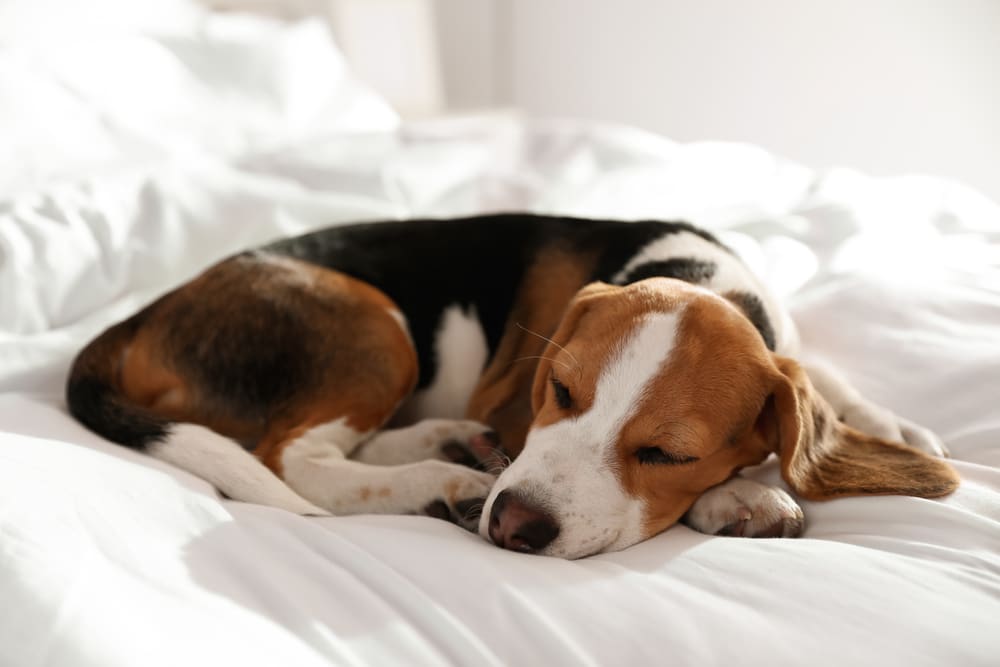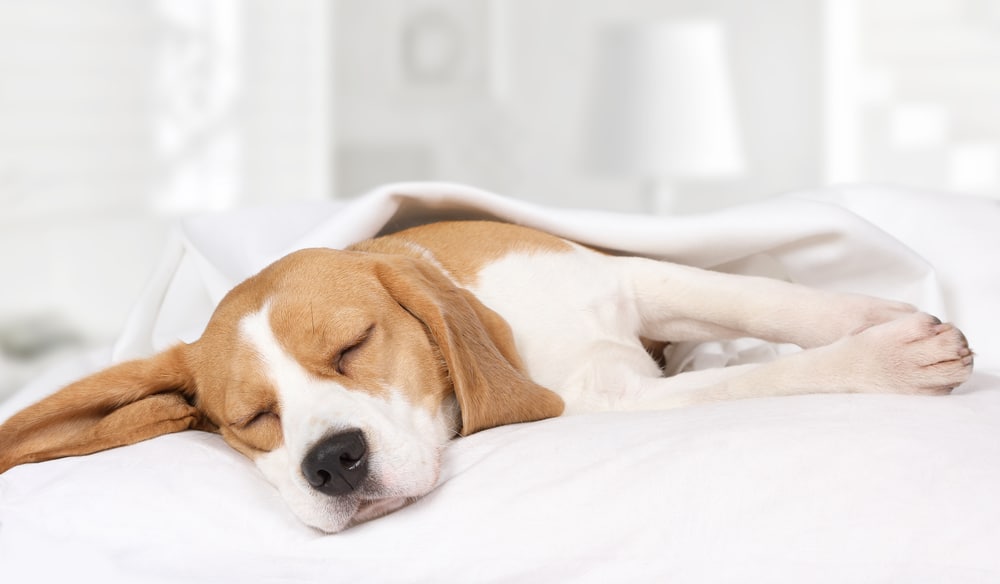Creating a regular sleep schedule for your pup is crucial to their well-being. Proper rest will help keep them healthy and happy, so it’s important to ensure they get enough shut-eye every night. But what’s the best sleep schedule for a dog?
Dogs need 12-14 hours of sleep per day. To promote good sleep hygiene, create a consistent schedule with 30-60 minutes of morning napping, 1-2 hours of afternoon snoozing, and 10-12 hours of nighttime sleep. Factors such as breed type, activity level, bedding, and environment should be considered when creating the schedule. Age, weather conditions, and temperature preferences can also impact a pup’s sleep routine as well.
Table of Contents
Benefits Of Regulating Your Dog’s Sleep Cycle
Having a regular sleep schedule for your dog can be incredibly beneficial for you and your furry friend. It helps ensure your pup gets the rest it needs each day while ensuring it is well-adjusted to its environment.
Also, a consistent sleep cycle makes it easier for you to create a predictable routine, as well as regulate your pet’s energy levels throughout the day.
A well-regulated sleep cycle for dogs can help them to better regulate their body temperature, allowing them to stay comfortable even when temperatures outside or inside their home fluctuate.
By understanding the importance of getting enough rest each day, dogs can become more independent and confident overall too.
Factors To Consider When Planning Your Dog’s Sleep Schedule

When creating a sleep schedule for your pup, there are several factors to consider.
Age Of Your Dog
When planning a sleep schedule for your dog, it is crucial to consider its age and activity level. Puppies need more sleep than adult dogs, and senior dogs may benefit from multiple naps during the day.
For puppies, it is vital for them to get plenty of rest during the day to stay active and alert during their waking hours.
Activity Level And Breed Type
Planning your pup’s sleep schedule should take into account their activity level and breed type. If you have an energetic pooch, they may need more naps than a calmer canine.
With the right amount of restful sleep tailored to your dog, both you and they will be able to enjoy life together!
Daytime Versus Nighttime Sleeping Patterns
Daytime naps are essential for dogs, as they need to rest during the day to restore their energy for the rest of the day.
This can be accomplished through short naps throughout the day or by scheduling more extended periods of rest during specific times of the day. In contrast, nighttime sleep is important for your dog to get enough deep sleep to stay healthy and alert during the day.
Most adult dogs require between 12–14 hours of sleep per day, with puppies needing up to 18–20 hours of rest each day.
Weather Conditions And Temperature Preferences
Dogs may not be able to express their preferences in words, but they can give clues as to what kind of environment they feel most comfortable with when it comes to sleeping.
The temperature of the room your dog sleeps in is an important factor when considering their comfort and restfulness. It’s best to keep the temperature in the range of 65-75 degrees Fahrenheit (18.33-23.89 degrees Celsius) for optimal sleeping conditions.
Suitable Bedding And Environment For Restful Sleep
It is important to consider the type of bedding and environment that is best for them. Providing a comfortable and restful sleeping area for your pup will ensure it gets the quality sleep it needs.
Many pet owners opt for orthopedic beds designed with enhanced cushioning and are made from high-quality materials such as memory foam or latex foam, allowing extra support for joints and muscles.
The location of the sleeping area should be well-ventilated and away from drafts, direct sunlight, and any loud noises or disruptions too.
Health Concerns
Health concerns such as diabetes or obesity can have a significant impact on the sleep schedule of a dog. If your dog has any of these conditions, you should talk to your vet about creating an individualized plan for their sleep schedule to ensure they are receiving enough rest each night.
This might include adjusting meal times so that dinner is earlier in the evening or providing more comfortable bedding that keeps them warm and cozy.
Suggested Sleep Schedule For A Dog
Creating the right sleep schedule for your dog is essential to their overall well-being. By considering factors such as age, breed type, activity level, and health concerns, you can create a plan that works best for them.
30-Minute To 1-Hour Nap In The Morning
A healthy dog’s sleep schedule should include a nap in the morning that lasts between 30 minutes and 1 hour. This can help your pup to stay energized throughout the day and remain alert and attentive.
Ideally, the morning nap should take place around 8 or 9 am, depending on their daily schedule and activity level.
1- to 2-Hour Nap In The Afternoon
When planning an afternoon nap for your pup, aim to have it last somewhere between 1 and 2 hours. This time frame allows your dog to get enough rest while still being able to stay active and engaged during its naturally more alert parts of the day.
It also prevents it from getting over-tired or sluggish during later evening activities such as walking or playing.
10 to 12 Hours Of Nighttime Sleep
Dogs need an average of 10-12 hours of sleep at night, which may vary slightly depending on the individual’s age, size, and breed. Young puppies generally require more sleep than adult dogs and can often benefit from up to 18 hours of restful sleep daily.
Larger breeds need more sleep than smaller breeds, while older dogs may need less sleep due to decreased energy levels.
Tips For Maintaining A Sleep Schedule For Your Dog
Here’s what they are.
Stick To A Consistent Schedule
Develop a routine sleep schedule for your dog and stick to it as much as possible.
Avoid Caffeine
While it may be tempting to give your pup some caffeinated treats or drinks, this can disrupt its natural sleeping cycle and make it challenging to fall asleep at night or stay asleep during the day.
Comforting Environment
Make sure your pup’s sleeping area is comfortable and inviting so it can drift off without distraction or discomfort.
Bedtime Routine
Establishing a calming pre-bedtime routine can help reduce anxiety and create an ideal sleep environment for your pup each night.
Monitor Health
Pay attention to any changes in behavior that could indicate underlying health issues, such as stress or anxiety, which could disrupt their regular sleep pattern.
In Conclusion: What’s the Best Sleep Schedule For A Dog?
Overall, providing a comfortable and restful sleeping area for your pup is essential to ensuring it gets the quality sleep it needs.
The suggested sleep schedule should act as a guide when crafting an individualized plan for their unique needs. However, it’s important to note that this may vary based on age, size, breed, or health conditions such as diabetes or obesity.
With these tips in mind, establishing a consistent bedtime routine with a comforting environment can help ensure your furry friend gets enough shuteye each night so it can stay energized during the day!
So, how do you plan to follow this suggested sleep schedule? Let us know in the comments below!
